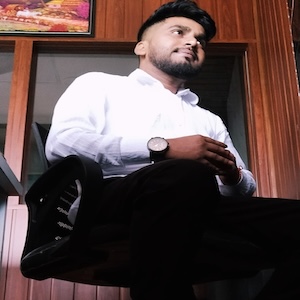SEBA Class 10 Weaving and Textile Design Chapter 2 Traditional Designs of North East Solutions English Medium, SEBA Class 10 Weaving and Textile Design Question Answer, SEBA Class 10 Weaving and Textile Design Chapter 2 Traditional Designs of North East Question Answer to each chapter is provided in the list so that you can easily browse throughout different chapter SEBA Class 10 Weaving and Textile Design Chapter 2 Traditional Designs of North East English Medium Solutions and select needs one.
SEBA Class 10 Weaving and Textile Design Chapter 2 Traditional Designs of North East
Also, you can read the SCERT book online in these sections Solutions by Expert Teachers as per SCERT (CBSE) Book guidelines. SEBA Weaving and Textile Design Elective Class 10 Question Answer. These solutions are part of SCERT All Subject Solutions. Here we have given SEBA Class 10 Weaving and Textile Design Chapter 2 Traditional Designs of North East Solutions for All Chapter, You can practice these here.
Traditional Designs of North East
Chapter – 2
| Self-Check Questions – 2 |
1. Write the name of any four Assamese traditional design.
Ans: The four types of Assamese traditional design are:
(i) Kaziranga Design: One of the most commonly used motifs is the Kaziranga style which, according to the local craftsmen and experts derives its inspiration from the wildlife of Kaziranga, which can be produced by straight draft with a seven colour extra weft design, consisting the design elements like: dear, single horn rhino, flying bird and a tree.
(ii) Jappi Design: Japi is a traditional conical hat used by the Assamese people as headgear. The plain japi were used by the farmers to protect them from rain and sun, while ornate japi were worn as a status symbol by Assamese royalty and nobility. Today, it is mostly used to welcome or felicitate guests and worn by the bihu dancer. The motif of Japi is often found woven on traditional Assamese garments, especially in gamucha.
(iii) Junbiri Design: This pattern is basically woven on the silk garment which is motivated from the Assamese neck piece ornament called the Joonbiri. The shape of the Joonbiri is like a semi-circular moon and is usually engraved with a lot of patterns. It can be constructed by single colour extra weft only over a plain background. Sometimes Dhol (musical instrument) is also combined with the Joonbiri motif.
(iv) King Khap Design: This style is inspired from the Ahom dynasty (14th century) and signifies the royalty and nobility of the former kingdom. The design consists of two lions facing each other along with a peacock bird covered with ornamented circles. In some of the King Khap style peacock is not found. It is generally constructed with 3 colour extra weft with pointed draft design.
2. Draw the traditional design for – (i) Bodo, (ii) Mising.
Ans: (i) Bodo Traditional Design.
(ii) Mishing Traditional Design.
3. State the characteristics of Arunachal traditional dress.
Ans: The characteristics of Arunachal traditional dresses are:
(i) The traditional women dresses of Arunachal Pradesh have vibrant colours and numerous patterns that instantly give a feel of their tribe culture.
(ii) The textile patterns found among the tribes of Arunachal Pradesh such are invariably of geometric pattern.
(iii) Most popular motifs are Zig-Zag lines and angular designs.
(iv) Adi and Apatani concentrate on simple straight line, straight forward patterns.
(v) There are arrangements of different coloured strips in coloured backgrounds.
4. Name the traditional dress of Manipuri Community.
Ans: The traditional dress of Manipuri community are:
(i) Phanek: There are mainly three types of phanek found in the traditional dress worn by manipuri women. The first one is of stripped nature of different colours. This type of phanek is usually worn at occasional functions like feasts, festivals and other important social functions. In this type, strips are set horizontally throughout the body of the cloth and are hemmed in by a broad border in black, on the top side as well as the bottom of the fabric. The pattern of strips is one of regular repetition of the set of three or two, predominantly three colours of matching combination.
The second type of a simple variety made of cotton in different colours. Women usually wore this type for day to day work. The younger generation wore this type of garment with a top. Another variety of phanek, having light cream or off-white colour, with or without any border, are generally used to wear at the time of mourning, religious functions etc. Widows and old women also used this variety.
(ii) Innaphi: Innaphi is used by women to wrap their upper part of the body. It is woven with a variety of cloth, of either cotton or silk. It is an upper garment. In texture, these wrappers were broadly – (a) fine cloth (b) medium coarse and (c) very coarse. The wrappers were in plain and in decorated types. The wrappers are woven in a plain design of white colour or sometimes with other colours also and the side of the cloth is decorated with extra threads, generally temple design is used.
5. Which community uses the “Temple Design” as one of their traditional design?
Ans: The “Temple Design” is traditionally used by the Assamese community.
6. Which type of yarn is used in Brindavani Vastra?
Ans: Silk yarn is used in Brindavani Vastra.
7. Name the traditional design which constitutes lion and peacock in the same design.
Ans: Kingkhap Design is the traditional design which constitutes lion and peacock in the same design. This style is inspired from the Ahom dynasty (14th century) and signifies the royalty and nobility of the former kingdom. The design consists of two lions facing each other along with a peacock bird covered with ornamented circles. In some of the Kingkhap style peacock is not found. It is generally constructed with 3 colour extra weft with pointed draft design.

Hi! my Name is Parimal Roy. I have completed my Bachelor’s degree in Philosophy (B.A.) from Silapathar General College. Currently, I am working as an HR Manager at Dev Library. It is a website that provides study materials for students from Class 3 to 12, including SCERT and NCERT notes. It also offers resources for BA, B.Com, B.Sc, and Computer Science, along with postgraduate notes. Besides study materials, the website has novels, eBooks, health and finance articles, biographies, quotes, and more.



